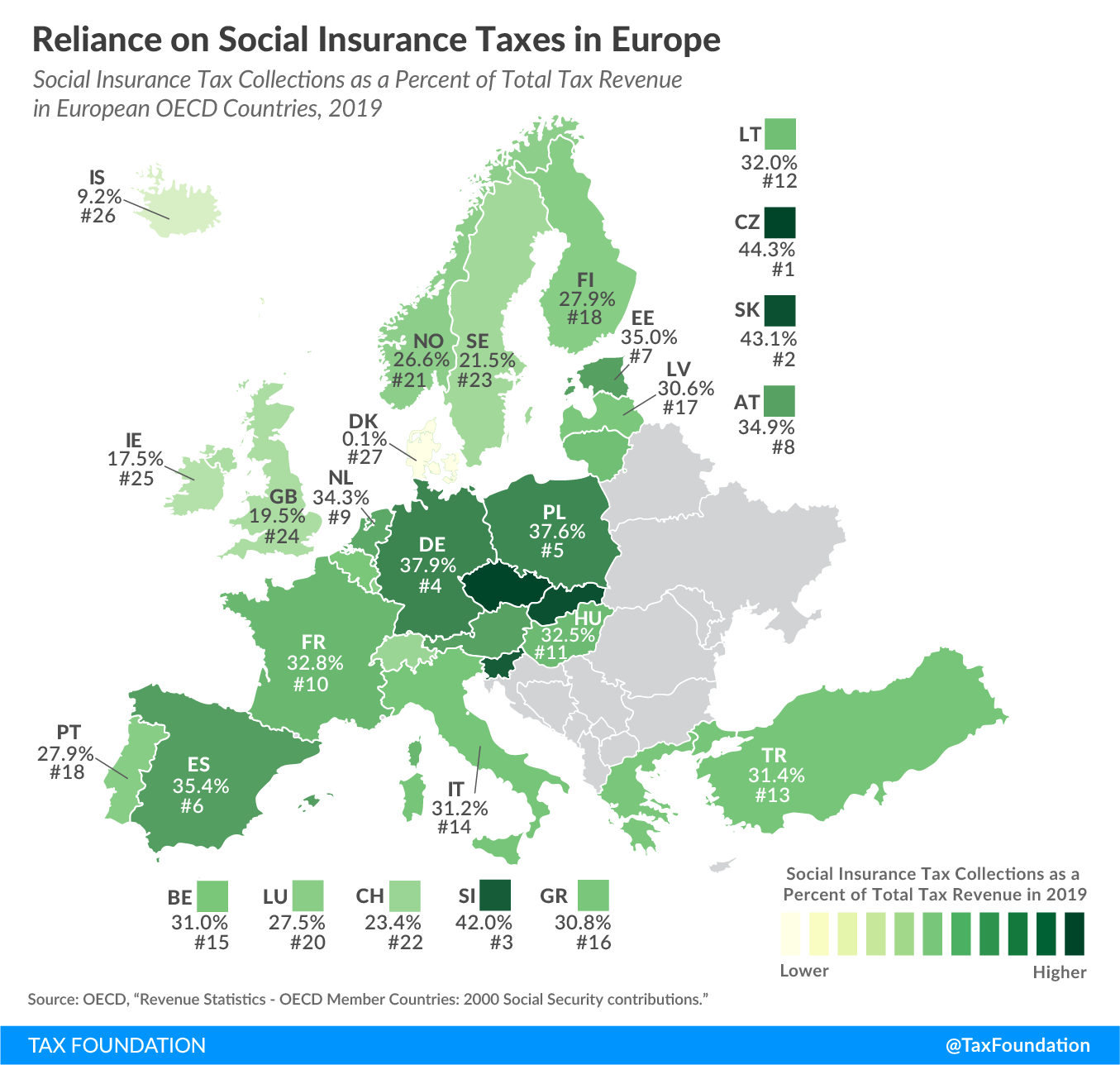
Reliance on Social Insurance Tax Revenue in Europe
2 min readBy:A recent report on taxA tax is a mandatory payment or charge collected by local, state, and national governments from individuals or businesses to cover the costs of general government services, goods, and activities. revenue sources shows that social insurance taxes—also referred to as social security contributions or payroll taxes—are an important revenue source for European governments. Social insurance taxes, as opposed to individual income taxes, are usually levied at a flat rate. The revenue is generally used to fund specific social programs, such as unemployment insurance, health insurance, and old age insurance.
In 2019 (the most recent data available), social insurance taxes were the second largest tax revenue source in European OECD countries, at an average of 29.5 percent of total tax revenue. Only consumption taxes were on average a larger source of tax revenue, at 32.4 percent.
In 2019, the Czech Republic and Slovakia relied the most on social insurance taxes, at 44.3 percent and 43.1 percent of total tax revenue, respectively. Slovenia followed, relying on social insurance taxes for 42.0 percent of total tax revenue. In contrast, individual income taxes represented a low share of total tax revenue in all three of these countries, ranging between 10.9 percent and 14.3 percent, compared to a European average of 23.5 percent.
Denmark relied the least on social insurance taxes, at 0.1 percent of total tax revenue. This is partially because Denmark does not levy a dedicated social insurance tax to fund its social programs, but instead uses a share of its individual income taxAn individual income tax (or personal income tax) is levied on the wages, salaries, investments, or other forms of income an individual or household earns. The U.S. imposes a progressive income tax where rates increase with income. The Federal Income Tax was established in 1913 with the ratification of the 16th Amendment. Though barely 100 years old, individual income taxes are the largest source of tax revenue in the U.S. revenue for these programs. Iceland and Ireland had the second and third lowest reliance on social insurance taxes, at 9.2 percent and 17.5 percent, respectively.
The extent to which countries rely on social insurance taxes and individual income taxes tends to correlate negatively. In other words, countries relying less on social insurance tax revenue typically rely more on individual income tax revenue, and vice versa.
Note: This is part of a map series in which we examine tax revenue sources in Europe.
Stay informed on the tax policies impacting you.
Subscribe to get insights from our trusted experts delivered straight to your inbox.
Subscribe





